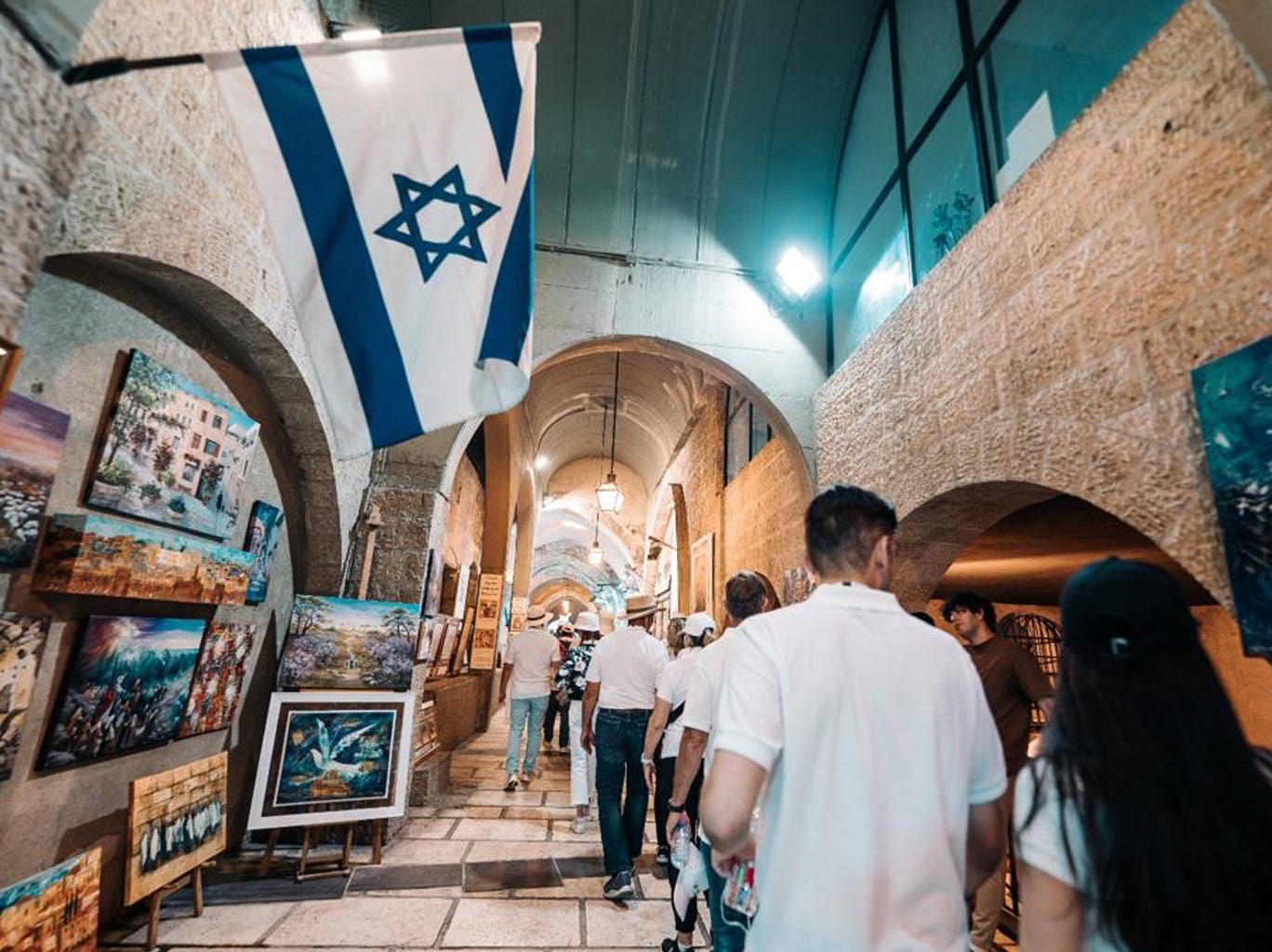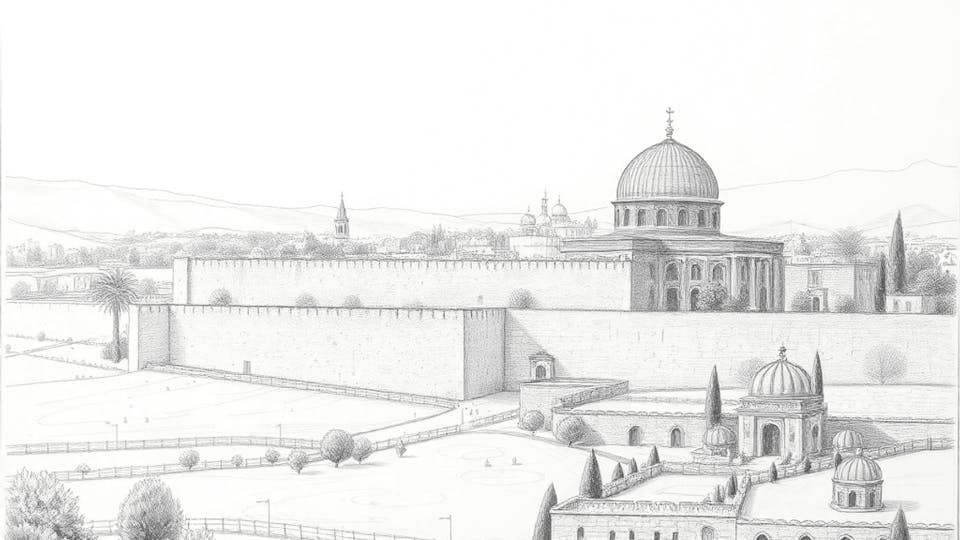
Exploring Israel’s Most Important Religious & Spiritual Sites – A Pilgrimage Through Time and Faith
Introduction: Israel – A Land of Faith and History

Israel stands as a crossroads of faith, where the sacred and the historical intertwine. For millennia, this land has been a beacon for Jews, Christians, and Muslims, each finding deep spiritual resonance in its hills, valleys, and cities. The stories of Abraham, Jesus, and Muhammad echo through its streets, making it a living museum of religious heritage.
The Spiritual Tapestry of Israel
Israel’s spiritual significance is unmatched. For Jews, it is the Promised Land, the cradle of their identity and the site of the ancient Temples. For Christians, it is the stage of Jesus’ life, death, and resurrection. For Muslims, it is home to Al-Aqsa Mosque, the third holiest site in Islam. This convergence of faiths creates a unique dynamic, where reverence and history collide in every corner.
Why Explore Israel’s Sacred Sites?
Visiting these sites is not just about seeing ancient ruins; it’s about experiencing the living faith of millions. Whether you’re a pilgrim seeking divine connection or a traveler intrigued by history, Israel offers a transformative journey. The energy of prayer at the Western Wall, the solemnity of the Via Dolorosa, and the tranquility of the Galilee all invite introspection and wonder.
A Land of Contrasts and Unity
Israel’s religious landscape is marked by contrasts—ancient and modern, conflict and coexistence. Yet, amidst the tensions, there’s a shared reverence for the divine. Exploring these sites reveals how faith can both divide and unite, offering lessons for our globalized world.
Jerusalem: The Holy City and its Significance

Jerusalem, the golden city, is the spiritual epicenter of Israel. Its Old City, a UNESCO World Heritage Site, is a mosaic of sacred spaces, each telling a story of devotion and struggle. Walking through its gates is like stepping into a living scripture.
The Western Wall: A Testament to Enduring Faith
The Western Wall, or Kotel, is the last remnant of the Second Temple, destroyed in 70 CE. For Jews, it is the holiest site where prayers are believed to ascend directly to heaven.
The wall’s massive stones, weathered by time, bear witness to centuries of longing and resilience. Pilgrims press handwritten prayers into its crevices, a tradition that embodies hope and continuity. The plaza before the wall is a microcosm of Jewish life, from joyous Bar Mitzvahs to silent tears of remembrance.
Beyond its religious role, the Western Wall is a symbol of Jewish identity. Its preservation despite centuries of exile speaks to the unbreakable bond between the Jewish people and their ancestral land. Visiting at sunset, when the stones glow in the fading light, is a moment of profound connection to history and faith.
The Church of the Holy Sepulchre: Site of Resurrection
For Christians, the Church of the Holy Sepulchre is the most sacred site, encompassing both Golgotha, where Jesus was crucified, and the tomb of his resurrection.
The church’s dimly lit interior, heavy with incense, transports visitors back to the events of the Passion. Pilgrims kneel to touch the Stone of Anointing, where Jesus’ body was prepared for burial, or wait in line to enter the Edicule, the small chapel housing the tomb. The church’s divided custody among six Christian denominations reflects both the unity and fragmentation of Christendom.
The experience of visiting the Holy Sepulchre is visceral. The weight of history is palpable, and the diversity of pilgrims—from Ethiopian monks to European tourists—highlights the global reach of Christianity. It’s a place where faith becomes tangible, bridging the gap between the ancient and the contemporary.
The Temple Mount/Haram al-Sharif: A Contested Holy Ground
The Temple Mount, known to Muslims as Haram al-Sharif, is one of the most contested religious sites on earth. For Jews, it is the site of the ancient Temples; for Muslims, it is home to the Dome of the Rock and Al-Aqsa Mosque.
The Dome of the Rock, with its golden dome shimmering over Jerusalem, is an architectural marvel. Built in the 7th century, it marks the spot where Muslims believe Muhammad ascended to heaven. The intricate mosaics and Quranic inscriptions inside are a testament to Islamic artistry and devotion.
Al-Aqsa Mosque, the third holiest site in Islam, has been a focal point of worship and political tension. Its sprawling courtyards are a place of prayer and community, yet access remains a sensitive issue. The juxtaposition of Jewish and Muslim claims to the site underscores the complexities of shared sacred spaces in a land of overlapping histories.
Nazareth: Following in the Footsteps of Jesus

Nazareth, the childhood home of Jesus, is a city steeped in Christian tradition. Its winding streets and bustling markets offer a glimpse into the world Jesus knew.
The Basilica of the Annunciation: Where Heaven Met Earth
The Basilica of the Annunciation marks the site where the Angel Gabriel announced to Mary that she would bear the Son of God. The modern church, built in the 1960s, is a striking blend of contemporary and traditional architecture.
Inside, the lower level houses the Grotto of the Annunciation, a small cave revered as Mary’s home. The upper level’s walls are adorned with mosaics from around the world, each depicting the Virgin Mary in the artistic style of its country. This global tribute reflects the universality of the Christian message.
The basilica’s serene courtyard, with its lush gardens and quiet corners, invites contemplation. It’s a place where the divine and the human intersect, offering a moment of peace amidst the city’s hustle.
The Synagogue Church: A Hidden Gem
Tucked away in Nazareth’s Old City, the Synagogue Church is believed to stand on the site of the synagogue where Jesus preached (Luke 4:16-30). The small, unassuming chapel is a quiet retreat from the larger pilgrimage sites.
The church’s simplicity is its strength. The stone walls and wooden pews evoke the humble beginnings of Jesus’ ministry. Visiting here, one can almost hear the echoes of his teachings, challenging the status quo and offering hope to the marginalized.
Nazareth’s blend of ancient and modern—where biblical history meets Arab-Israeli life—makes it a fascinating stop for those exploring Israel’s religious and spiritual sites.
The Sea of Galilee: Reflecting on Spiritual Teachings
The Sea of Galilee, a freshwater lake in northern Israel, is synonymous with Jesus’ ministry. Its tranquil waters and surrounding hills provide a scenic backdrop for reflection.
Capernaum: The Town of Jesus
Capernaum, a fishing village in Jesus’ time, is now an archaeological park. The ruins of a synagogue, where Jesus likely taught, and the traditional site of Peter’s house offer a tangible link to the Gospels.
Standing by the lake, one can imagine Jesus calling his disciples—fishermen who left their nets to follow him. The simplicity of Capernaum contrasts with the grandeur of Jerusalem, reminding visitors that spiritual transformation often begins in humble settings.
The Mount of Beatitudes: A Sermon for the Ages
Overlooking the Sea of Galilee, the Mount of Beatitudes is where Jesus delivered the Sermon on the Mount (Matthew 5-7). The octagonal church, surrounded by gardens, provides a peaceful space to meditate on his teachings.
The Beatitudes—blessings for the poor, the meek, and the peacemakers—resonate across centuries. Sitting on the hillside, with the lake shimmering below, one feels the timeless relevance of these words in a world still yearning for justice and compassion.
Beyond the Icons: Exploring Lesser-Known Spiritual Sites
While Jerusalem and Nazareth draw crowds, Israel’s lesser-known sites offer equally profound experiences.
Safed: Mysticism and Art
Safed (Tzfat), a hilltop city in northern Israel, is the heart of Jewish mysticism. Its cobblestone streets are lined with synagogues and art galleries, blending spirituality and creativity.
The Ari Synagogue, named after the 16th-century Kabbalist Isaac Luria, is a center of mystical study. The city’s serene atmosphere and panoramic views make it a haven for seekers of deeper spiritual understanding.
Beit She’an: Layers of History
The ancient ruins of Beit She’an reveal layers of civilizations—Roman, Byzantine, and Islamic. The well-preserved theater and colonnaded streets offer a glimpse into the past, where faith and daily life were intertwined.
Walking through Beit She’an, one senses the impermanence of empires and the enduring quest for meaning that transcends time.
Conclusion
Exploring Israel’s Most Important Religious & Spiritual Sites is a journey that transcends geography. It’s an encounter with the divine, a dialogue with history, and an invitation to reflect on our own beliefs. Whether you stand at the Western Wall, kneel in the Church of the Holy Sepulchre, or ponder by the Sea of Galilee, Israel’s sacred spaces offer a mirror to the soul—a reminder of the enduring power of faith in shaping human destiny.
VisaOnlineVietnam – The Fastest and Most Reliable Vietnam Visa Service
Are you planning a trip to Vietnam and need a visa? VisaOnlineVietnam is your trusted partner, providing fast, reliable, and professional visa services for travelers worldwide.
Why Choose VisaOnlineVietnam?
✅ Over 20 Years of Experience – We have helped more than 5 million clients successfully obtain their Vietnam visas.
✅ Fast Processing – Choose from Normal (3-5 working days), Urgent (2-3 working days), or Emergency (30 minutes – 1 hour) processing options.
✅ 24/7 Support – Our team is available anytime to assist you with your visa application.
✅ Simple Transparent Process – No hidden fees, no complications—just a smooth application process.
Our Visa Services:
🛂 Vietnam Tourist Visa – Ideal for travelers exploring Vietnam.
💼 Vietnam Business Visa – Suitable for professionals and entrepreneurs.
⚡ Urgent Emergency Visa – Get your visa approved in as little as 30 minutes!
✈️ Visa on Arrival – Hassle-free visa approval letter before your flight.
🌎 E-Visa Services – Convenient online visa application for eligible nationalities.
How to Apply?
1️⃣ Fill out the online application at VisaOnlineVietnam.com.
2️⃣ Make a secure payment using various payment methods.
3️⃣ Receive your visa approval letter via email.
4️⃣ Get your visa stamped upon arrival in Vietnam.
With VisaOnlineVietnam, getting a Vietnam visa has never been easier! Contact us today:
📧 Email: [email protected]
📲 WhatsApp: (+84) 968 18 77 18
📞 USA Hotline: +1(972)-666-0676
🌐 Website: VisaOnlineVietnam.com
Let us handle your visa while you focus on enjoying your journey! 🚀✈️

